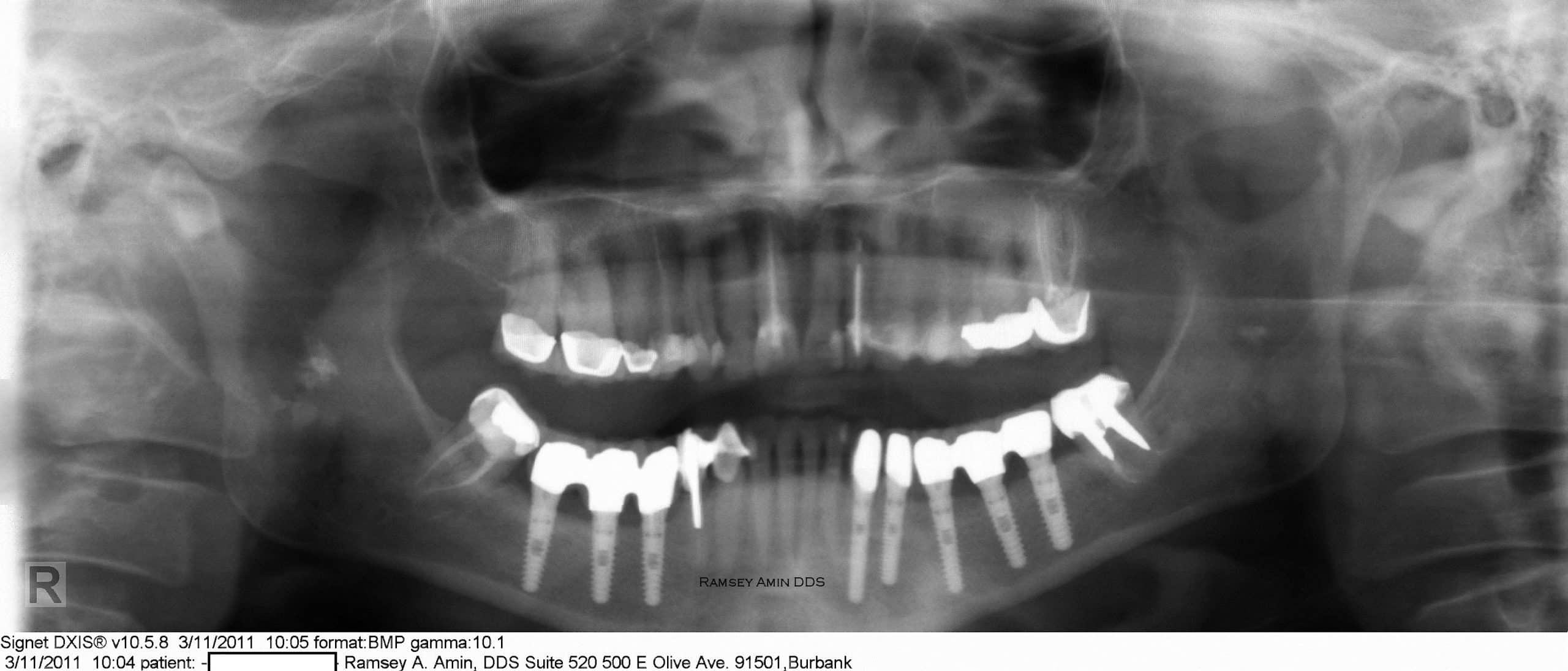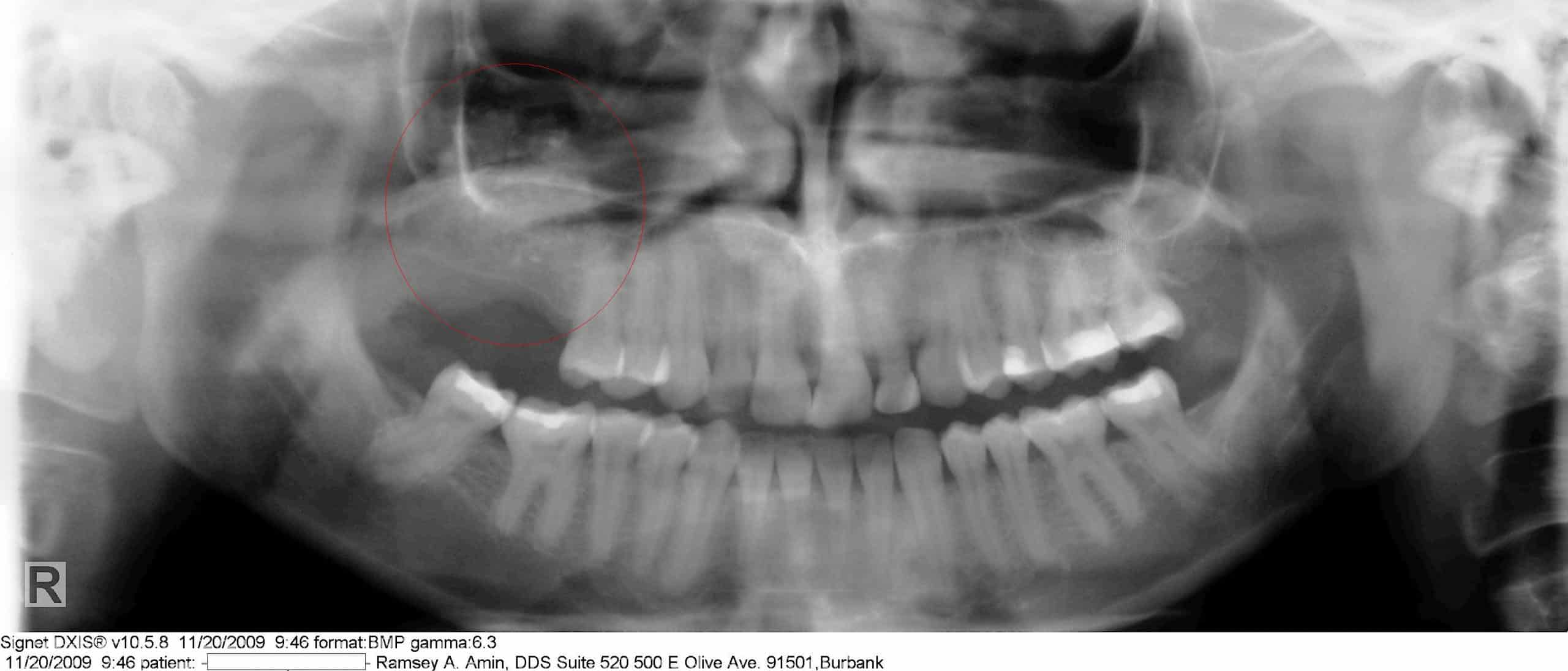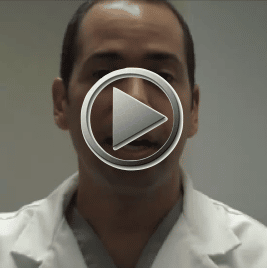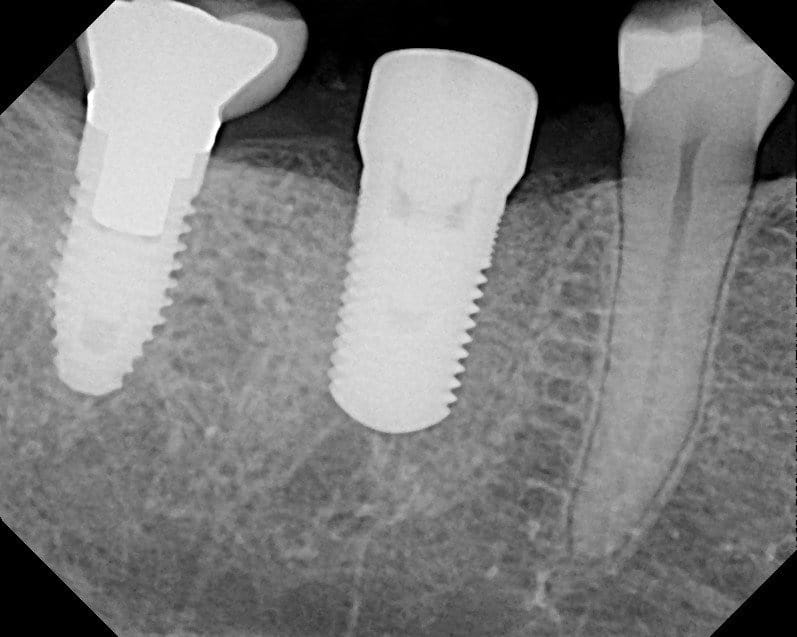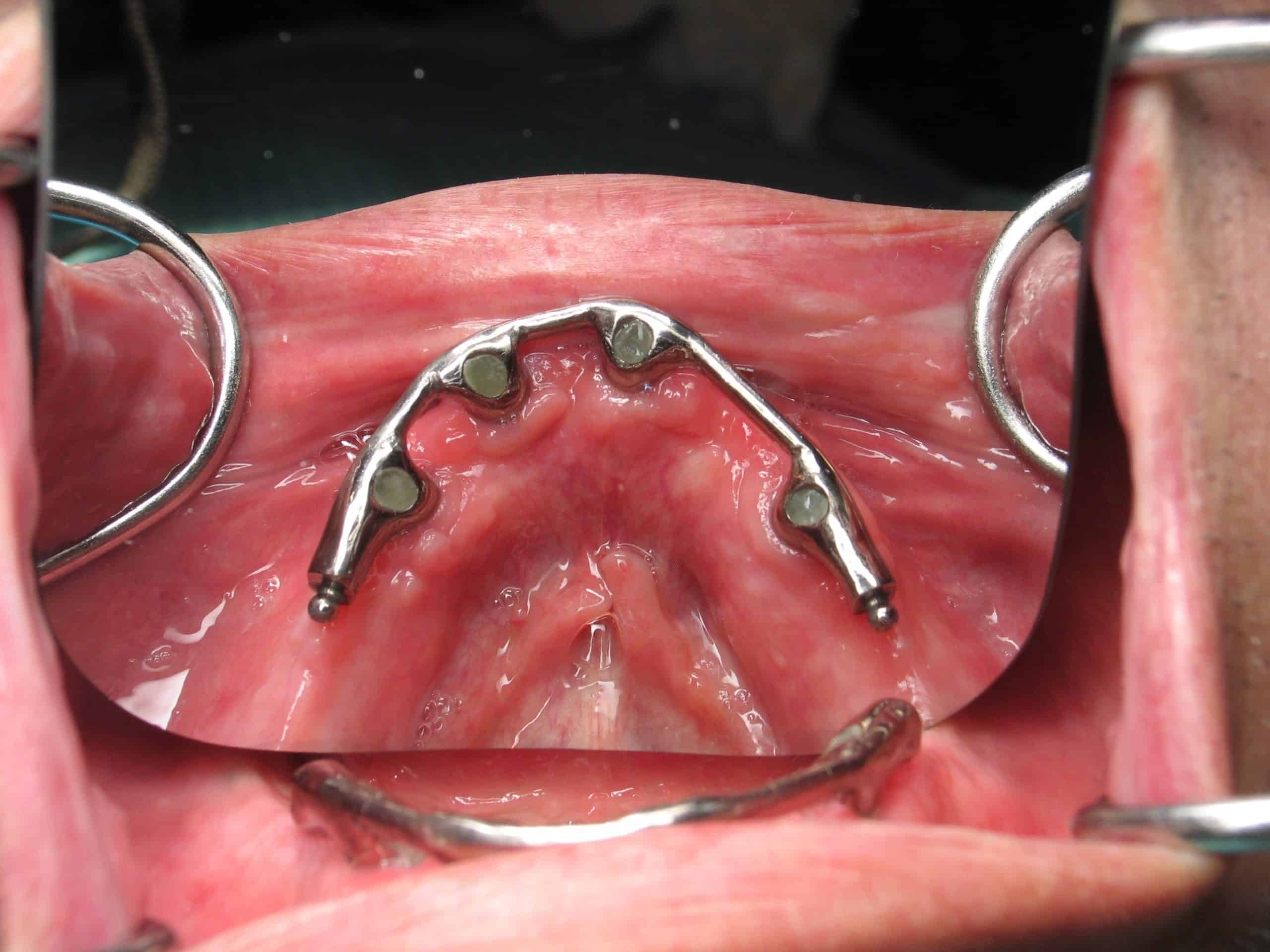Nerve-Repositioning or “Nerve Lateralization” is reserved for the rarest of cases, but is extremely useful in the right situation. This is a procedure that I perform.
It is only done to replace the lower back teeth with a very unique situation. You may need this procedure if the bone is not “tall” enough to have an implant. There also needs to be a lack of space from in-between you top and bottom teeth
Lower Back teeth with implants healing:
Here is a picture of a patient with a lot of space between the bottom and top teeth:
This space can be built back with bone with some difficulty.
This is a picture of a patient that has very little space:
It is more desirable to have less space, which means you have more bone.
A CT scan is required for this procedure. Below are some example images.
The orange line in this image is where the nerve is. You don’t want the

